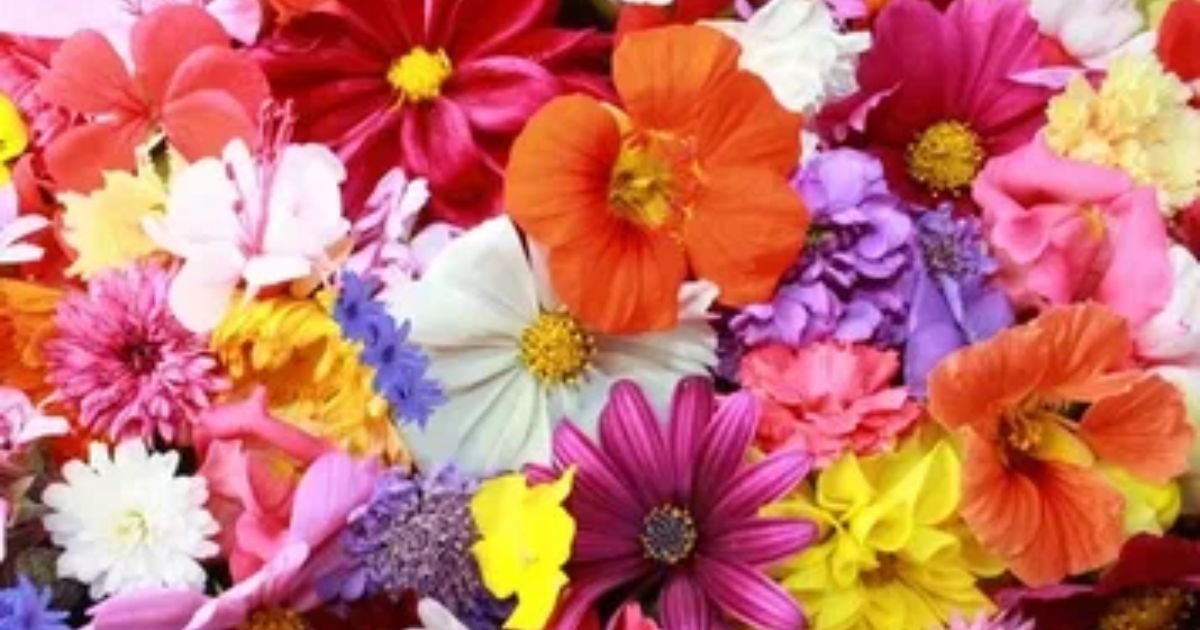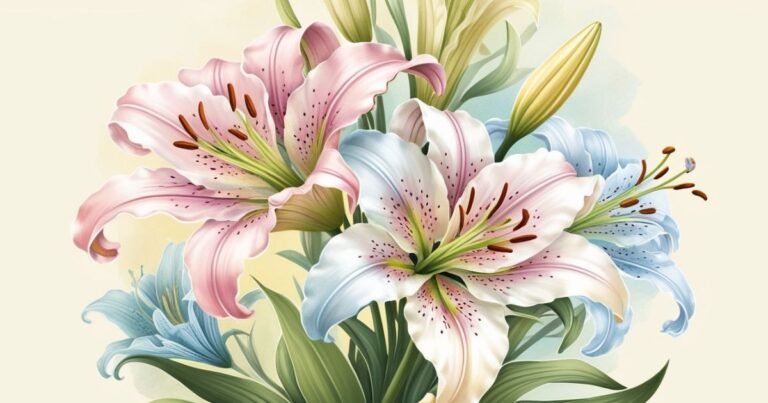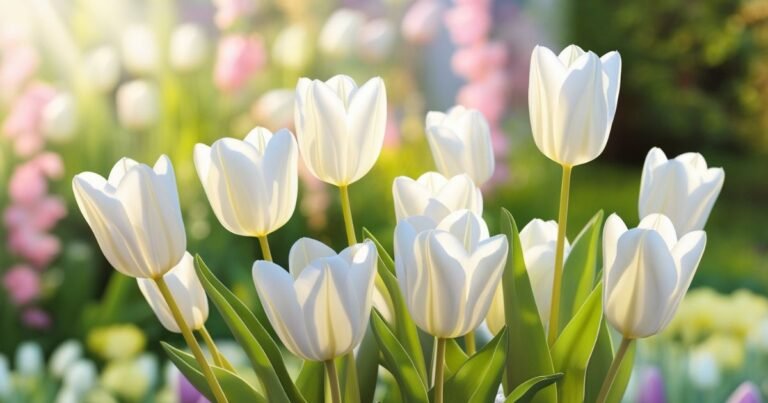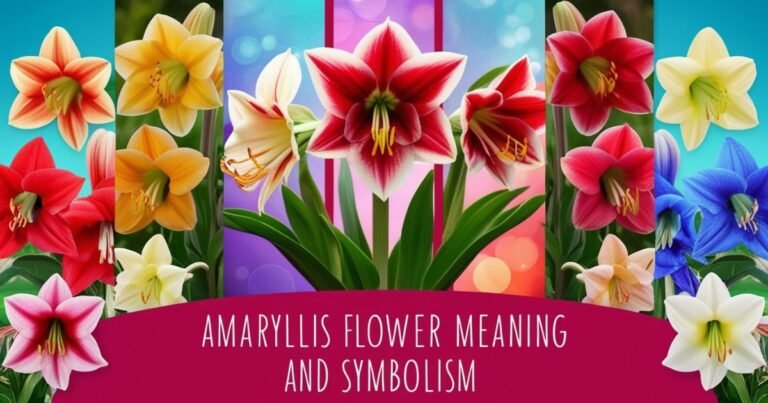15+ Gorgeous Flowers That Symbolize Rebirth -Flower Secrets
Flowers that symbolize rebirth across cultures, with each variety carrying unique meanings. Spring brings life back to gardens, showcasing vibrant colors and fragrances that embody transformation and resilience.
Crocuses defy winter’s chill, while cherry blossoms represent fleeting beauty. Daffodils herald new beginnings, symbolizing hope after harsh winters. Flowers have deep cultural significance, inspiring reflection on personal growth and renewal.
Their beauty and strength remind us of life’s enduring cycles and the potential for change beneath challenges. Overall, flowers serve as timeless symbols of growth, rejuvenation, and the spirit of life.
Flowers That Symbolize Rebirth
Here are the 15 gorgeous flowers that symbolize rebirth
- Buttercup – Linked to youthful energy and new beginnings.
- Cherry Blossom – Represents renewal and fleeting beauty of life.
- Crocus – A sign of rebirth as it blooms through snow.
- Daffodil – Symbolizes new beginnings and hope.
- Hibiscus – A tropical flower symbolizing personal transformation.
- Hyacinth – Represents the renewal of life and joy.
- Iris – Associated with hope and the promise of renewal.
- Lilac – A fragrant flower signifying spring and renewal.
- Lotus – Symbol of spiritual rebirth and purity.
- Magnolia – Represents endurance and rebirth through beauty.
- Marigold – A vibrant flower representing the cycle of life and death.
- Peony – Symbol of fresh starts and personal growth.
- Snowdrop – A delicate flower symbolizing hope and rebirth.
- Sunflower – Associated with resilience, growth, and life’s renewal.
- Tulip – Represents renewal and the arrival of spring.
Buttercup – Linked to youthful energy and new beginnings
The buttercup, with its radiant yellow hue, is a charming symbol of youthful energy and vitality. Its vibrant petals seem to capture the essence of optimism, reminding us of the boundless possibilities that accompany new beginnings.
Often blooming in spring, this delicate flower represents the rejuvenation of life after winter’s dormancy, making it a perfect emblem of transformation and renewal. The buttercup’s cheerful demeanor inspires positivity, encouraging individuals to embrace change with enthusiasm and hope.
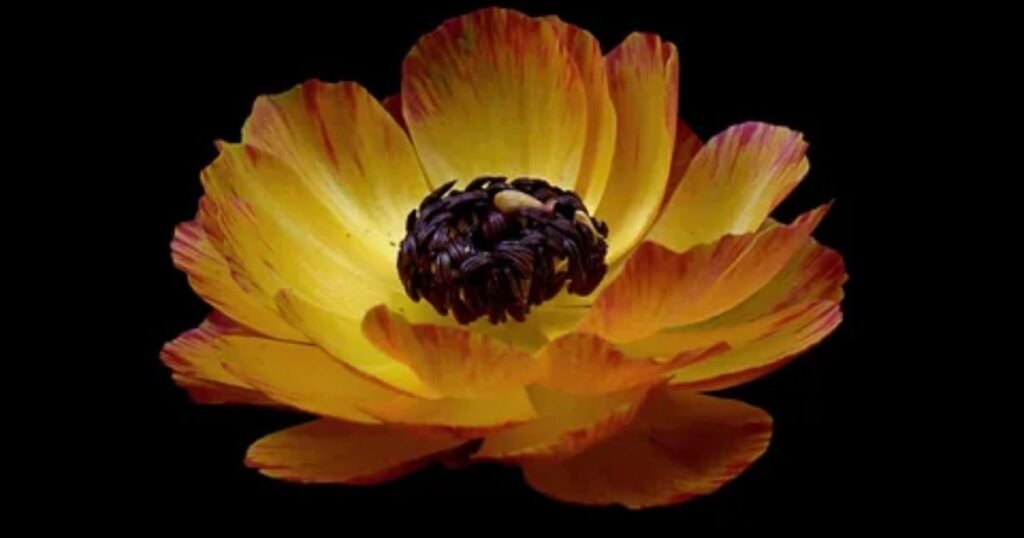
Across various cultures, the buttercup holds profound symbolism, celebrated as a flower of innocence and fresh starts. Its association with youthful exuberance makes it a meaningful choice for commemorating personal growth or embarking on a new journey.
Whether gracing wild meadows or cultivated gardens, the buttercup’s enduring beauty serves as a reminder of life’s cycles and the potential for renewal at every stage.
Cherry Blossom – Represents renewal and beauty of life
The Cherry Blossom is a stunning flower that symbolizes renewal, often heralding the arrival of spring. Its delicate petals bloom for a brief period, making it a powerful symbol of the fleeting beauty of life. As the flowers burst forth, they remind us that moments of beauty are transient and must be cherished, highlighting the constant cycle of rebirth in nature.
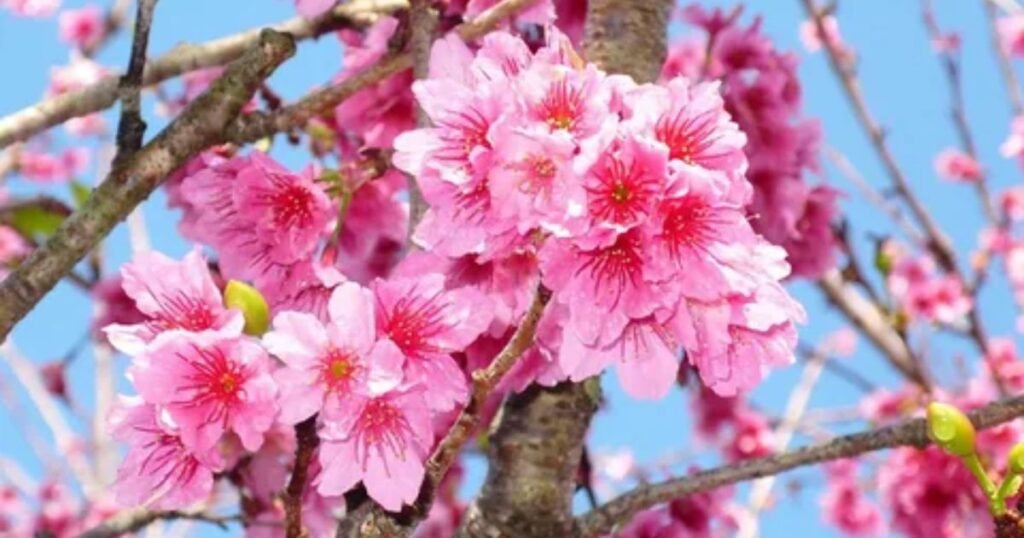
The cherry blossom’s short-lived beauty calls attention to the importance of embracing change and growth, which are essential parts of the human experience.
With respect to cultural differences, the Cherry Blossom is a poignant reminder of the renewal that comes with each new season. It serves as a metaphor for life’s fragility, teaching us to appreciate the present and embrace the inevitable changes that come with time.
This flower’s symbolism resonates with those seeking personal transformation, encouraging reflection on life’s continuous flow of new beginnings. Its significance lies not only in its beauty but also in the lessons it imparts about the delicate balance between life, death, and rebirth.
Crocus – A sign of rebirth as it blooms through snow.
The crocus is a powerful symbol of rebirth, emerging from the cold, snowy ground as one of the first flowers of spring. Its ability to bloom despite the harshness of winter reflects resilience and the triumph of new life over adversity.
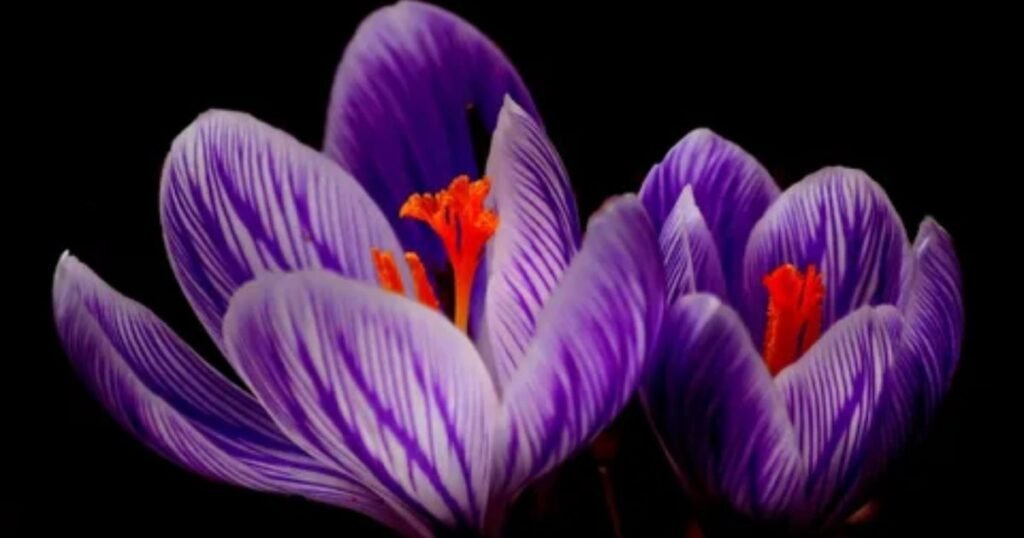
As snow melts away, the vibrant petals of the crocus appear, signifying hope and renewal, making it a beacon of transformation after the long dormancy of the colder months.
This flower’s emergence from beneath the snow captures the essence of new beginnings, as it marks the end of winter and the start of the warmer season.
The crocus is often associated with growth and the rejuvenation of life, reminding us that no matter how challenging the circumstances, there is always potential for renewal and change. Its presence in gardens is a clear representation of nature’s ability to transform and regenerate, inspiring us to embrace fresh starts.
Daffodil – Symbolizes new beginnings and hope
The daffodil is a vibrant and radiant flower that embodies new beginnings and hope. As one of the first flowers to bloom in spring, it signals the end of winter’s cold grip and ushers in the warmth of renewal.
With its bright yellow petals, the daffodil serves as a powerful reminder that no matter how harsh the winter, the promise of new life is always just around the corner. Its early bloom represents the arrival of fresh starts and the optimism that comes with each new season.
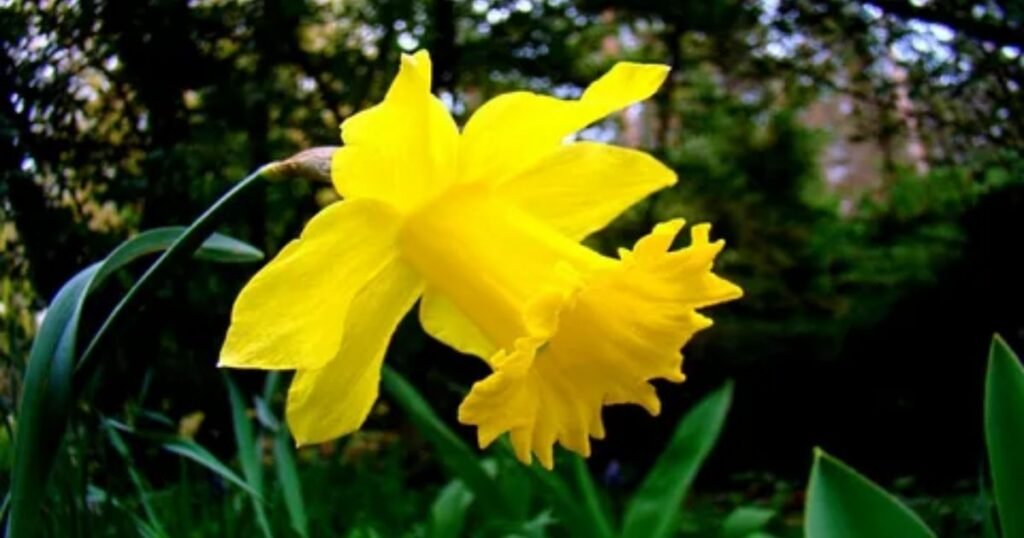
Throughout history, the daffodil has been a symbol of rebirth in various cultures, often linked to the idea of overcoming adversity. As it emerges from the earth after the frost has thawed, the flower’s resilience speaks to the potential for growth even after challenging times.
Its ability to thrive in difficult conditions inspires a sense of hope, encouraging us to embrace change and welcome the opportunities that come with it. The daffodil, in all its beauty, stands as a beacon of renewal and the endless cycle of life.
Hibiscus – flower symbolizing personal transformation
The hibiscus is a striking tropical flower that symbolizes personal transformation through its vibrant and bold appearance. Known for its large, colorful petals, this flower represents the power to overcome challenges and embrace change.
Often found in tropical climates, the hibiscus blooms under the warmth of the sun, embodying growth, strength, and a new phase in life. Its symbolism of transformation invites individuals to reflect on their journey, inspiring them to embrace their true selves and move forward with confidence.
With its vivid hues and delicate nature, the hibiscus also represents resilience and the ability to flourish even in tough environments. This flower’s personal significance resonates with many cultures, where it is regarded as a symbol of beauty, strength, and renewal.
As a tropical bloom, the hibiscus is a reminder that through transformation, one can rise above adversity, just as the flower thrives and blooms despite its surroundings. It encourages us to welcome change and see it as an opportunity for growth and personal evolution.
Hyacinth – Represents the renewal of life and joy
The Hyacinth flower is a beautiful symbol of the renewal of life and joy. Blooming in early spring, it signals the end of winter’s dormancy and the beginning of a new season filled with energy and hope. Its vibrant petals, filled with rich hues, represent not just the physical renewal of nature but also the emotional and spiritual rejuvenation that accompanies the arrival of spring.
The Hyacinth invites us to embrace new beginnings, offering a reminder that life constantly evolves, and with each change, there is a chance for joy and growth.
In many cultures, the Hyacinth holds significant meaning as a flower of rebirth and transformation. Its scent and beauty lift the spirit, offering a moment of reflection on the power of renewal.
As it breaks through the soil, the Hyacinth reminds us that even after periods of hardship or dormancy, there is always potential for renewal, happiness, and new opportunities. This flower serves as an inspiring symbol of the resilience of nature and the continuous cycle of life, where joy and growth follow every challenge.
Iris – Associated with hope and the promise of renewal
The Iris is a stunning flower that embodies the spirit of hope and the promise of renewal. Often blooming in early spring, it signifies the breaking of winter’s hold and the fresh start of a new season. Known for its vibrant colors, the Iris reflects optimism and the potential for growth.
It is a flower that encourages resilience, reminding us that after every dark period, there is light, and with each challenge comes the opportunity for transformation and renewal.
The Iris has been a symbol of faith and new beginnings. Its petals, reaching upward, represent the ability to rise above difficulties, fostering a sense of courage and renewal in the face of adversity.
This flower is not only a natural beauty but also an emblem of spiritual growth, urging us to embrace change and hope for the future. With its timeless symbolism, the Iris inspires us to move forward, trusting that every season of life brings the possibility of rebirth.
Lilac – A fragrant flower signifying spring and renewal
Lilac is a fragrant flower deeply connected with the essence of spring, symbolizing the renewal of life. As one of the first blooms to emerge after winter, its delicate blossoms represent the awakening of nature from its dormancy.
The vibrant hues of lilac evoke a sense of freshness and new beginnings, making it a perfect embodiment of the season’s promise of growth and rejuvenation. It serves as a reminder that even after the harshest winters, life can bloom again with renewed energy and beauty.
Throughout history, lilac has also been associated with hope and transformation. This enchanting flower’s symbolism transcends time and culture, embodying the themes of personal renewal and fresh starts.
Its rich fragrance and bold colors invite reflection on the cyclical nature of life, where every end gives way to a new beginning. Lilac is more than just a flower; it is a living symbol of the perpetual cycle of change and the boundless possibilities that spring and renewal bring.
Lotus – Symbol of spiritual rebirth and purity
The lotus is a timeless emblem of spiritual rebirth and purity, celebrated across various cultures for its profound symbolism. Rising from muddy waters, it blooms into a flawless flower, embodying the transformation from adversity to enlightenment.
This unique journey of growth mirrors the human spirit’s ability to transcend challenges, making the lotus a powerful reminder of resilience and renewal. Its delicate petals unfold gracefully, reflecting the purity of thought, action, and soul.
In Eastern philosophy, the lotus holds deep significance as a representation of spiritual awakening. Its association with rebirth stems from its cyclical blooming pattern, symbolizing continuous growth and rejuvenation.
Whether depicted in sacred art or celebrated in gardens, the lotus inspires introspection and the pursuit of higher truths. It stands as a beacon of hope, reminding us that even in the murkiest waters, beauty and potential can flourish.
Magnolia – Represents endurance and rebirth through beauty
Renowned for its timeless charm, the Magnolia stands as a vivid symbol of endurance and rebirth, thriving across centuries with its robust nature and breathtaking beauty.
Its elegant blossoms, often appearing in early spring, narrate a tale of renewal, signaling the arrival of new beginnings. Rooted in resilience, the magnolia’s ability to flourish in diverse climates demonstrates the strength required to overcome life’s challenges, making it a profound emblem of transformation.
The captivating beauty of magnolia flowers is deeply interwoven with their significance in various cultures, representing perseverance and the cyclical nature of life.
Each bloom reflects themes of growth and rejuvenation, reminding us that even in moments of struggle, there is potential for revival and prosperity. The magnolia’s majestic petals inspire admiration and hope, offering a gentle yet powerful lesson in embracing life’s ever-evolving journey.
Marigold – flower representing the cycle of life and death
Celebrated for its radiant hues, the marigold holds profound significance in symbolizing the intricate cycle of life and death. Its vibrant petals, ranging from golden yellows to fiery oranges, embody themes of vitality, renewal, and remembrance.
Across various cultures, marigolds have been woven into traditions and rituals, often seen as sacred blooms representing the continuity of life even in the face of mortality. These flowers, thriving in diverse conditions, remind us of resilience and the unending flow of nature’s cycles.
In cultural symbolism, marigolds are often associated with honoring the departed while embracing the beauty of life’s fleeting moments. Their presence in festivals like Día de los Muertos (Day of the Dead) underscores their role in bridging the spiritual and earthly realms. Beyond their aesthetic charm, marigolds inspire reflection on transformation and rejuvenation, urging us to find beauty in endings as much as in beginnings.
Peony – Symbol of fresh starts and personal growth
Known for its lush and delicate blooms, the peony holds deep symbolism tied to fresh starts and personal growth. Revered across cultures, this flower is often associated with new beginnings, embodying the promise of a brighter future. Its ability to flourish in spring, despite the challenges of colder months, mirrors the resilience required for personal transformation. With every unfolding petal, the peony whispers tales of progress, renewal, and the beauty of embracing change.
Across gardens and celebrations, the peony’s vibrant hues and enchanting fragrance make it a timeless emblem of hope and growth. This flower inspires individuals to shed the weight of the past and step confidently into new chapters of life. Its symbolism, rooted in themes of rebirth and transformation, continues to captivate hearts, reminding us that growth often arises from patience, perseverance, and the courage to start anew.
Snowdrop – A delicate flower symbolizing hope and rebirth
Emerging quietly at the end of winter, the snowdrop stands as a delicate yet powerful symbol of hope and rebirth. Its fragile white petals, often breaking through frosty soil, represent the promise of brighter days after the harshest seasons. This resilient bloom not only signifies the renewal of life but also serves as a gentle reminder of the strength hidden in fragility, inspiring us to persevere through challenges.
Celebrated across cultures, the snowdrop carries deep symbolism in folklore and traditions, often associated with purity and fresh beginnings. Its ability to bloom amidst adversity highlights themes of transformation and rejuvenation, making it a timeless emblem of resilience. Whether in gardens or natural landscapes, this enchanting flower captivates with its beauty and profound meaning.
Sunflower – Associated with growth, and life’s renewal
Standing tall and radiant, the sunflower is a powerful emblem of resilience and growth. Its ability to follow the sun throughout the day symbolizes unwavering determination and adaptability in the face of challenges. Bursting with vibrant yellow hues, it embodies the essence of life’s renewal, reminding us that even after the darkest storms, the potential for growth remains steadfast.
Known for its deep cultural significance, the sunflower reflects themes of hope, perseverance, and regeneration across many traditions. Its strong roots and towering stems are a testament to nature’s ability to thrive and flourish despite adversity. A true inspiration, the sunflower encourages us to embrace transformation and seek positivity in every phase of life.
Tulip – Represents renewal and the arrival of spring
Renowned for their vibrant colors and elegant form, tulips are a timeless symbol of renewal and the arrival of spring. Emerging after the cold dormancy of winter, they bring a burst of life and energy to gardens, marking the transition to warmer days. Each tulip bloom tells a story of transformation, reflecting themes of hope, resilience, and the promise of new beginnings. Their diverse hues, from soft pastels to bold reds and yellows, evoke emotions of joy and rejuvenation, making them a favorite choice for springtime celebrations.
Across cultures, tulips carry profound meaning, often associated with growth and the cyclical nature of life. Their ability to thrive in various climates speaks to their enduring charm and universal appeal. In gardens or floral arrangements, tulips serve as a reminder of nature’s ability to renew itself, inspiring individuals to embrace change and fresh opportunities. As harbingers of spring, they transform landscapes into vibrant canvases, inviting us to celebrate life’s endless possibilities.
Conclusion
Flowers that symbolize rebirth serve as timeless reminders of nature’s ability to inspire renewal, transformation, and growth. Each bloom carries its own unique story, weaving a tapestry of beauty and symbolism that transcends cultural and historical boundaries.
From the delicate snowdrop breaking through the last traces of frost to the bold sunflower standing resiliently under the summer sun, these flowers teach us valuable lessons about endurance, hope, and the potential for new beginnings. Their vivid colors, enchanting fragrances, and profound meanings bring a sense of joy and rejuvenation to gardens and hearts alike.
Whether it’s the spiritual purity of the lotus, the fleeting beauty of cherry blossoms, or the youthful energy of buttercups, these 15 gorgeous flowers highlight the endless cycle of life and nature’s constant renewal. They inspire us to embrace change, celebrate personal growth, and find beauty in life’s transitions.
By incorporating these blooms into our surroundings, we not only enhance our spaces but also invite a deeper connection with themes of rebirth and hope. Flowers that symbolize rebirth stand as powerful metaphors for our own journeys, reminding us that no matter how harsh the winters of life may be, a new season of growth and beauty is always on the horizon.
FAQs
What flower is a symbol of rebirth?
Lotus – In many Eastern cultures, the lotus is cherished as a powerful symbol of rebirth and spiritual enlightenment. Emerging untainted from muddy waters, it embodies purity, resilience, and the triumph of beauty over hardship.
What Flower Symbolises New Beginnings?
Daffodil – Symbolizes the arrival of spring and is strongly tied to fresh starts and new beginnings.
Calla Lily – Represents purity, elegance, and rebirth, making it a powerful flower of renewal.
White Tulips – Stand for forgiveness and a clean slate, often linked with hope and peace.
Roses – Timeless blooms that carry meanings of love, passion, and a fresh chapter in life.
Daisies – Associated with innocence and joy, reflecting simplicity and new opportunities.
Lotus Flower – A sacred symbol of spiritual awakening, transformation, and rising above challenges.
What does lily symbolize?
Lilies carry rich symbolism, representing purity, beauty, renewal, and fertility, though their meanings shift with color and cultural context. In Christianity, white lilies are closely tied to the Virgin Mary, symbolizing purity as well as the eternal cycle of life, death, and rebirth. In Chinese culture, lilies are seen as a sign of prosperity and abundance. Their colors also add unique layers of meaning—pink lilies express admiration and gratitude, orange conveys passion and enthusiasm, while yellow signifies joy, friendship, and happiness.

